Solar Energy Tax Incentives That Change the Game
Solar energy tax incentives are reshaping the renewable energy sector. Programs like the Federal Investment Tax Credit (ITC) considerably lower installation costs for solar systems. Additionally, state-specific incentives further promote accessibility. These financial mechanisms not only encourage adoption but also enhance local economies. As the landscape evolves, it’s crucial to explore the various incentives available and their broader implications. What does the future hold for solar energy adoption?
Understanding the Federal Investment Tax Credit (ITC)
Although solar energy has gained significant traction in recent years, many individuals and businesses may still be unaware of the Federal Investment Tax Credit (ITC), an essential incentive designed to promote solar adoption. The ITC allows taxpayers to deduct a percentage of the cost of solar energy systems from their federal taxes. Initially set at 30%, this credit has undergone changes over the years but continues to provide substantial financial relief. Eligible systems must be placed in service during the specified tax year, and both residential and commercial installations qualify. By reducing upfront costs, the ITC plays a critical role in making solar energy more accessible, encouraging a shift toward renewable energy sources across the United States. As the global power capacity continues to increase with the rise of renewable energy, the ITC remains a vital tool in supporting this transition.
State-Specific Solar Incentives
What specific incentives exist at the state level to encourage solar energy adoption? Many states offer a variety of programs to promote solar energy utilization. These may include tax credits, rebates, and grants for residential and commercial solar installations. For instance, California provides a robust rebate program, while New York offers the NY-Sun Initiative, which aims to increase solar capacity through financial incentives. Additionally, some states implement property tax exemptions for solar installations, allowing homeowners to save on annual taxes. Moreover, net metering policies enable solar users to sell excess energy back to the grid, enhancing financial viability. By leveraging these state-specific incentives, individuals and businesses can greatly reduce the upfront costs associated with solar energy adoption. Furthermore, adopting sustainable practices can further enhance the benefits of solar energy by promoting a healthier environment.
The Role of Solar Renewable Energy Certificates (SRECs)
Solar Renewable Energy Certificates (SRECs) play an important role in the solar energy market by providing a mechanism for tracking and trading renewable energy production. Homeowners who generate solar power can benefit financially through the sale of these certificates, thereby incentivizing solar adoption. Understanding the dynamics of the SREC market is essential for both consumers and policymakers aiming to promote renewable energy initiatives. Additionally, the rise of hybrid work models has made it easier for individuals to invest in solar energy as they seek to enhance their work-life balance.
Understanding SREC Basics
The increasing adoption of renewable energy sources has brought significant attention to Solar Renewable Energy Certificates (SRECs), which play an essential role in incentivizing solar energy production. SRECs are tradable certificates issued to solar energy system owners for each megawatt-hour of electricity generated. These certificates serve as proof that renewable energy was produced, allowing owners to sell them on the market. The revenue generated from SREC sales can help offset installation costs and promote further investment in solar technologies. Different states have varying SREC markets, influenced by renewable energy standards that require utilities to obtain a specific number of SRECs. Consequently, understanding SREC basics is vital for stakeholders looking to navigate the evolving landscape of solar energy incentives.
Benefits for Homeowners
Investing in solar energy can provide homeowners with substantial financial benefits, particularly through the utilization of Solar Renewable Energy Certificates (SRECs). SRECs represent the environmental benefits of solar energy production, allowing homeowners to sell these certificates to utility companies that need to meet renewable energy standards. This sale can generate significant revenue, which helps offset the initial installation costs of solar panels. Additionally, as homeowners accumulate SRECs, they can create a secondary income stream, further enhancing the financial appeal of solar energy investments. Moreover, the demand for SRECs can lead to increased property values, as homes equipped with solar systems are often more attractive to environmentally conscious buyers. Overall, SRECs serve as a compelling incentive for homeowners considering solar energy.
Market Dynamics Explained
A growing awareness of renewable energy has positioned Solar Renewable Energy Certificates (SRECs) as essential components in the solar market. SRECs serve as tradable credits that represent the environmental benefits of solar energy generation. When solar energy systems produce electricity, they earn SRECs, which can be sold to utilities and other entities required to meet renewable energy standards. This market creates a financial incentive for solar adoption by enhancing the return on investment for solar system owners. The demand and pricing for SRECs can fluctuate based on state regulations and market conditions, influencing the overall viability of solar projects. Consequently, SRECs play a vital role in shaping the dynamics of the solar energy landscape, promoting increased investment and deployment of solar technology.
Net Metering: How It Works and Its Benefits
How can homeowners maximize their solar energy investments? One effective strategy is through net metering, a billing arrangement that allows solar panel owners to receive credit for excess energy produced. When homeowners generate more electricity than they consume, the surplus is sent back to the grid, effectively spinning their meter backward. This process not only offsets future energy bills but can also lead to significant savings over time. Net metering enhances the financial viability of solar installations by ensuring that homeowners are compensated for their contributions to the energy grid. Additionally, it promotes renewable energy usage, benefiting the environment while providing economic advantages. Overall, net metering empowers homeowners to fully capitalize on their solar energy system’s potential. Embracing minimalism in lifestyle can further enhance the benefits of solar energy investments by prioritizing sustainable living choices.
Property Tax Exemptions for Solar Installations
While homeowners may worry about the financial implications of installing solar panels, property tax exemptions for solar installations can considerably alleviate these concerns. These exemptions prevent local governments from increasing property tax assessments due to the addition of solar systems, ensuring that homeowners do not face a higher tax burden after making eco-friendly upgrades. By shielding homeowners from increased property taxes, these incentives promote the adoption of renewable energy, allowing individuals to invest in solar technology without fear of financial repercussions. Numerous states have enacted legislation to provide these exemptions, recognizing their significance in supporting sustainable energy initiatives. Overall, property tax exemptions serve as an essential tool in encouraging solar energy adoption and fostering a greener future. Additionally, such incentives can help mitigate the economic inequality often exacerbated by oligarchic systems, ensuring that more individuals have access to renewable energy solutions.
Sales Tax Exemptions on Solar Equipment
Sales tax exemptions on solar equipment greatly reduce the upfront costs associated with installing solar systems. These exemptions allow consumers to purchase solar panels, inverters, and other necessary components without incurring additional sales tax, making solar energy more financially accessible. By eliminating this extra expense, potential buyers are encouraged to invest in renewable energy solutions. Many states and local governments recognize the importance of promoting solar adoption, often implementing these exemptions as part of broader sustainability initiatives. This financial incentive not only benefits homeowners but also businesses looking to leverage solar technology. As a result, sales tax exemptions contribute considerably to the growth of the solar industry, supporting the shift towards clean energy and fostering a more sustainable future.
Grants and Rebates for Solar Energy Projects
Grants and rebates play a vital role in supporting solar energy projects by providing financial assistance to homeowners and businesses. Various grant programs and state-level rebates are available, each with distinct eligibility criteria and funding levels. Understanding the application process is essential for maximizing these benefits and ensuring successful project implementation.
Available Grant Programs
As interest in solar energy continues to grow, various grant programs and rebates have emerged to support individuals and organizations in implementing solar projects. These programs are designed to alleviate the financial burden associated with the installation of solar systems. Federal initiatives, such as the Solar Investment Tax Credit (ITC), provide considerable tax reductions, while additional grants can cover installation costs or equipment purchases. Nonprofit organizations also offer funding opportunities aimed at increasing accessibility to solar technology for underserved communities. Furthermore, educational institutions may qualify for grants focused on promoting sustainability through solar energy education programs. By capitalizing on these available funding sources, participants can markedly reduce their initial investment and contribute to a greener future.
State-Level Rebates
Numerous states across the U.S. offer rebates and incentives to promote solar energy adoption, greatly enhancing the financial viability of solar projects. These state-level rebates vary considerably by region, reflecting local energy goals and budgets. Often structured as a percentage of installation costs, these rebates can considerably reduce upfront expenses for homeowners and businesses. For example, some states provide fixed cash payments for solar installations, while others offer performance-based incentives tied to the energy produced. Additionally, certain states may have specific programs targeting low-income households or community solar projects to guarantee broader access. By reducing financial barriers, these state-level initiatives encourage more individuals and organizations to invest in renewable energy, contributing to a cleaner and more sustainable future.
Application Process Essentials
Understanding the application process for grants and rebates in solar energy projects is essential for maximizing financial benefits. Applicants must first identify available programs at federal, state, and local levels. Each program has specific eligibility requirements, deadlines, and documentation needed. Typically, applicants will need to provide proof of installation, project costs, and energy savings projections.
Completing the application accurately is vital, as errors can lead to delays or denials. It is advisable to consult with experts or organizations specializing in solar energy incentives to navigate the complexities effectively. Moreover, potential applicants should track deadlines and guarantee compliance with all program guidelines to secure funding successfully. By following these steps, individuals and businesses can enhance their chances of receiving financial support for solar energy initiatives.
Financing Options and Incentives for Solar Purchases
A variety of financing options and incentives are available for individuals and businesses looking to invest in solar energy systems. These options include solar loans, which allow borrowers to finance their systems with low-interest rates, and leases, where users can install solar panels with little to no upfront cost while paying monthly fees. Power purchase agreements (PPAs) are another popular choice, enabling customers to buy the power generated by the solar system at a fixed rate. Additionally, federal tax credits, state rebates, and local incentives can greatly reduce the overall cost of solar installations. These financing solutions and incentives not only make solar energy more accessible but also encourage broader adoption of renewable energy technologies.
Benefits of Community Solar Programs
Community solar programs offer significant advantages by enhancing accessibility to solar energy for a broader population. By allowing individuals who may not have the means for personal solar installations to participate, these programs foster inclusivity. Additionally, they contribute to local economic growth by creating jobs and stimulating investment in renewable energy infrastructure.
Accessibility for All
Numerous individuals and households, especially those in underserved areas, can benefit from community solar programs, which provide a viable alternative to traditional solar installations. These programs allow participants to invest in or subscribe to a portion of a larger solar array, enabling access to renewable energy without the need for personal solar panels. This model considerably lowers barriers related to upfront costs and property ownership, making solar energy more accessible. Additionally, community solar initiatives often promote local engagement and awareness of renewable energy benefits. By diversifying energy sources and reducing reliance on fossil fuels, these programs can contribute to a more equitable energy landscape, empowering communities and enhancing energy resilience for those who may otherwise be excluded from the solar revolution.
Local Economic Growth
Access to community solar programs not only empowers underserved populations but also stimulates local economic growth. By investing in solar energy, communities can create jobs in installation, maintenance, and manufacturing, thereby boosting local employment rates. Additionally, these programs often reduce energy costs, allowing residents and businesses to allocate more funds towards other local goods and services. The influx of solar projects can also attract investments, enhancing the community’s infrastructure and overall economic stability. Moreover, local governments benefit from increased tax revenues generated by solar installations, which can be reinvested into community projects. Ultimately, community solar programs foster a sustainable economic environment while promoting energy independence and resilience.
Future Trends in Solar Energy Tax Incentives
How will evolving policies shape the landscape of solar energy tax incentives in the coming years? As governments worldwide grapple with climate change, a shift towards more aggressive solar incentives is anticipated. Future trends may include enhanced federal tax credits, state-level rebates, and innovative financing options tailored for low-income households. Policymakers are likely to prioritize incentives that promote energy equity, ensuring broader access to solar technology. Additionally, as technology advances, some jurisdictions may introduce performance-based incentives, rewarding efficiency and output rather than merely installation. The integration of solar energy with electric vehicles and smart grids could also influence incentive structures, fostering a more holistic approach to renewable energy. Consequently, the landscape of solar energy tax incentives is poised for significant transformation.
Frequently Asked Questions
Can I Combine Multiple Solar Incentives for Greater Savings?
The individual wonders if combining multiple solar incentives will result in greater savings. Experts confirm that stacking various incentives is often possible, enabling homeowners to maximize financial benefits and enhance their investment in solar energy installations.
How Do Solar Incentives Affect Home Resale Value?
The impact of solar incentives on home resale value varies. Generally, homes with solar installations can attract higher offers, as buyers recognize long-term savings and environmental benefits, potentially leading to increased marketability and property appreciation.
Are There Tax Implications for Selling Excess Solar Energy?
When selling excess solar energy, individuals may face tax implications. Income generated from selling energy is typically taxable, influencing overall financial benefits. Consulting a tax professional can provide clarity on specific obligations and potential deductions.
How Often Do Solar Tax Incentives Change?
Tax incentives for solar energy typically undergo changes every few years, often influenced by legislative sessions, economic conditions, and shifts in governmental priorities. Stakeholders must stay updated to maximize benefits from these evolving incentives.
Do Solar Incentives Apply to Commercial Properties as Well?
Solar incentives do apply to commercial properties, allowing businesses to benefit from credits and deductions. These incentives can greatly reduce installation costs, promoting sustainability while enhancing financial viability for companies aiming to adopt renewable energy solutions.
Conclusion
To sum up, solar energy tax incentives play a pivotal role in transforming the renewable energy landscape. By greatly lowering installation costs and promoting accessibility, programs like the Federal Investment Tax Credit and various state-specific incentives encourage widespread adoption of solar power. Additionally, mechanisms such as SRECs, net metering, and property tax exemptions further enhance the financial appeal of solar energy. As these incentives evolve, they are set to drive continued growth in solar energy adoption, benefiting both the economy and the environment.



